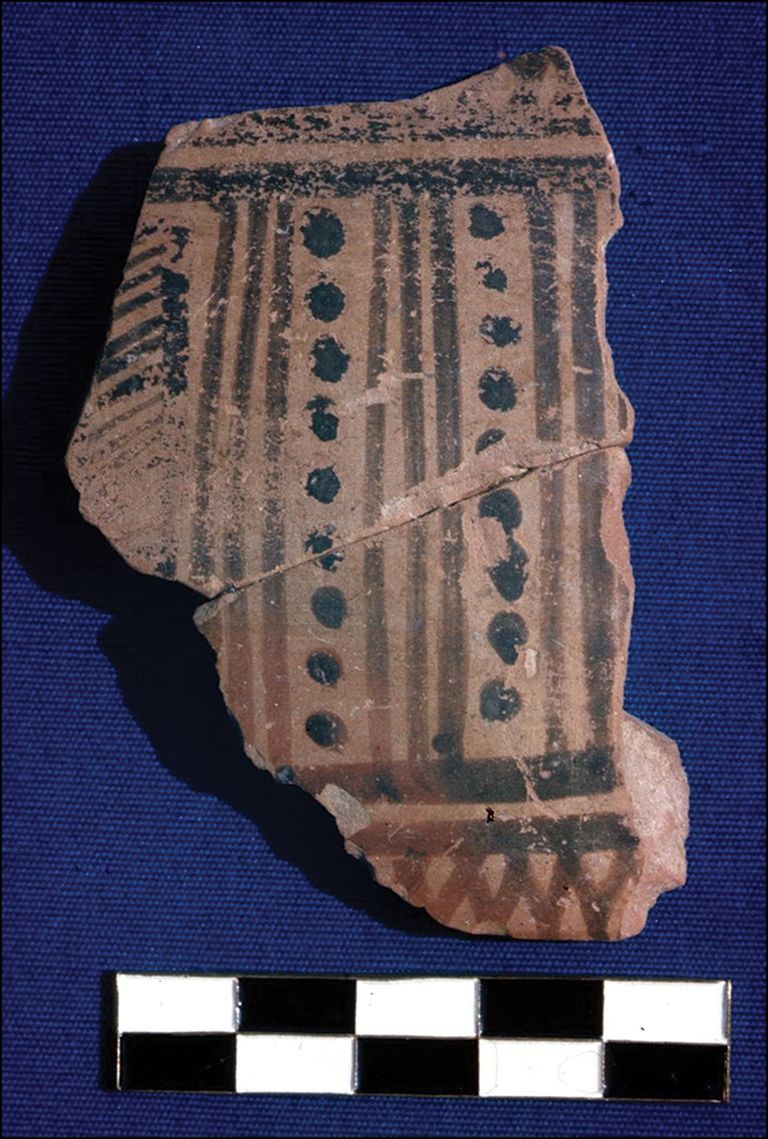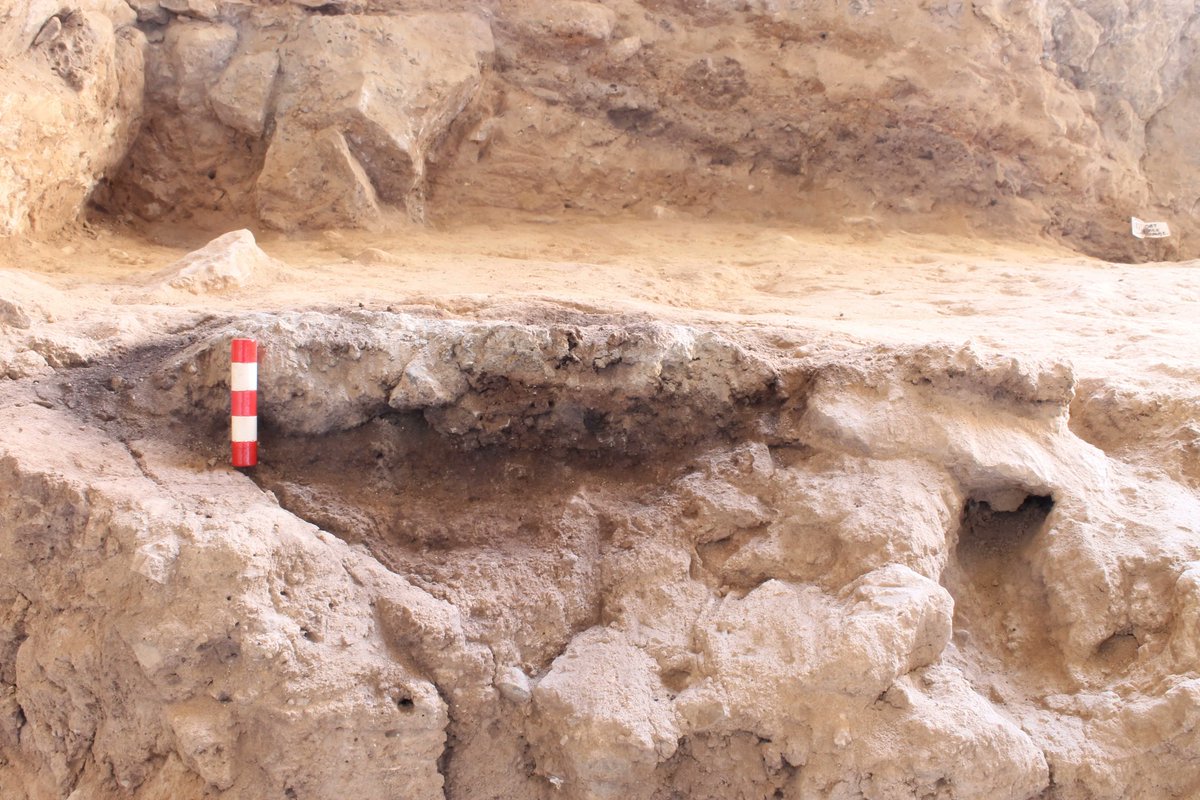
Antiquity is a bimonthly review of world archaeology edited by @RobinSkeates. Please be aware that we sometimes share relevant images of human remains.
How to get URL link on X (Twitter) App


 Characterised by stylised depictions of animals and stretching from Eastern Europe to China, animal-style art is emblematic of the ‘Scythian culture’ of the Eurasian Steppe. Often thought to be in use from the 7th-2nd centuries BC, it remains unclear how the style originated 2/13
Characterised by stylised depictions of animals and stretching from Eastern Europe to China, animal-style art is emblematic of the ‘Scythian culture’ of the Eurasian Steppe. Often thought to be in use from the 7th-2nd centuries BC, it remains unclear how the style originated 2/13 

 Throughout history, volcanic eruptions have had serious consequences for human societies, such as cold weather, lack of sun, and low crop yields. In 43 BC, when a volcano in Alaska erupted, harvests failed in the countries around the Mediterranean, causing famine and disease 2/14
Throughout history, volcanic eruptions have had serious consequences for human societies, such as cold weather, lack of sun, and low crop yields. In 43 BC, when a volcano in Alaska erupted, harvests failed in the countries around the Mediterranean, causing famine and disease 2/14 

 Warning: this thread contains images of human remains 2/16
Warning: this thread contains images of human remains 2/16

 The Greek Geometric period is named after the ceramics of the time, which were painted with geometric patterns. It took place towards the end of the Early Iron Age in Greece and witnessed the beginning of Greek colonisation in the central Mediterranean. 2/9
The Greek Geometric period is named after the ceramics of the time, which were painted with geometric patterns. It took place towards the end of the Early Iron Age in Greece and witnessed the beginning of Greek colonisation in the central Mediterranean. 2/9 

 Archaeologists have discovered hundreds of black henbane seeds in a hollowed bone at the rural Roman-period settlement of Houten-Castellum in the Netherlands, providing the first firm evidence for the poisonous plant’s intentional use in the Roman world. 2/13
Archaeologists have discovered hundreds of black henbane seeds in a hollowed bone at the rural Roman-period settlement of Houten-Castellum in the Netherlands, providing the first firm evidence for the poisonous plant’s intentional use in the Roman world. 2/13 

 The Romans are well-known for their love of wine. In the Roman world, large clay pots called dolia were manufactured for fermenting, storing and ageing wines. 2/12
The Romans are well-known for their love of wine. In the Roman world, large clay pots called dolia were manufactured for fermenting, storing and ageing wines. 2/12 

 Broomcorn millet was first domesticated in China before spreading west into Central Asia and beyond. In China it was cooked through boiling and steaming, producing a wet and sticky end product. 2/12
Broomcorn millet was first domesticated in China before spreading west into Central Asia and beyond. In China it was cooked through boiling and steaming, producing a wet and sticky end product. 2/12 

 Archaeologists have typically associated the rise of social and political 'complexity' in Eurasia with the development of agriculture. However, hunter-gatherers in Siberia built fortified settlements centuries before similar sites developed in Europe. 2/10
Archaeologists have typically associated the rise of social and political 'complexity' in Eurasia with the development of agriculture. However, hunter-gatherers in Siberia built fortified settlements centuries before similar sites developed in Europe. 2/10 

 Content warning: This thread will feature some more complete images of bog bodies 2/16
Content warning: This thread will feature some more complete images of bog bodies 2/16 

 📌 The artwork was discovered at Amarna, the location of the capital city of Pharaoh Akhenaten (1347–1332 BC). Excavations in 1924 uncovered a palace belonging to Meritaten, daughter of the pharaoh and Nefertiti. 2/14
📌 The artwork was discovered at Amarna, the location of the capital city of Pharaoh Akhenaten (1347–1332 BC). Excavations in 1924 uncovered a palace belonging to Meritaten, daughter of the pharaoh and Nefertiti. 2/14

 🌍 The Aksumite Kingdom ruled much of the northern Horn of Africa in the first millennium AD, stretching from Ethiopia to Arabia, and was an important contemporary of the Roman Empire. 2/15
🌍 The Aksumite Kingdom ruled much of the northern Horn of Africa in the first millennium AD, stretching from Ethiopia to Arabia, and was an important contemporary of the Roman Empire. 2/15

 The two panels depict people interacting with dangerous animals. In one, a human grasps their penis whilst leopards approach from either side. In the other panel, a squatting male holding a rattle or snake faces a bull. 2/14
The two panels depict people interacting with dangerous animals. In one, a human grasps their penis whilst leopards approach from either side. In the other panel, a squatting male holding a rattle or snake faces a bull. 2/14
https://twitter.com/AntiquityJ/status/1580129907988103170Snails helped archaeologists pinpoint when a town was destroyed
https://twitter.com/AntiquityJ/status/1559836185471623168

 A mass grave of up to 60 further victims was found at Budeč hillfort (🇨🇿), providing archaeological evidence of this event and making this a #HillfortsWednesday
A mass grave of up to 60 further victims was found at Budeč hillfort (🇨🇿), providing archaeological evidence of this event and making this a #HillfortsWednesday
 For 200 years, Bronze Age miners extracted a copper bonanza from the Great Orme Mines. It supplied large parts of Britain, and metal from the mine even found its way as far as Germany and Sweden.
For 200 years, Bronze Age miners extracted a copper bonanza from the Great Orme Mines. It supplied large parts of Britain, and metal from the mine even found its way as far as Germany and Sweden. 

 🥬 Dr @CerenArkbotani and a team of archaeologists wanted to explore the role of plants in the diet of Palaeolithic humans and Neanderthals. Previous research has often focused on the importance of meat in the diet of ancient hunter-gatherers, especially Neanderthals. 2/14
🥬 Dr @CerenArkbotani and a team of archaeologists wanted to explore the role of plants in the diet of Palaeolithic humans and Neanderthals. Previous research has often focused on the importance of meat in the diet of ancient hunter-gatherers, especially Neanderthals. 2/14

 🧬 Previous research had recovered DNA from the Near Eastern wildcat, the ancestor of modern domestic cats, from ancient sites in Central Europe dated to 3000BC. 2/13
🧬 Previous research had recovered DNA from the Near Eastern wildcat, the ancestor of modern domestic cats, from ancient sites in Central Europe dated to 3000BC. 2/13

 💧 Wetlands have been the site of some of the best-preserved archaeological discoveries, but it is estimated half of the world's wetlands have been lost. Those that remain are at risk from climate change: doi.org/10.15184/aqy.2…
💧 Wetlands have been the site of some of the best-preserved archaeological discoveries, but it is estimated half of the world's wetlands have been lost. Those that remain are at risk from climate change: doi.org/10.15184/aqy.2… 

 The Kaogong ji was written in China in the 1st millennium BC. It's the oldest known technical encyclopedia, detailing items from swords to instruments and how to make them - including formulae for mixing bronze. 2/11
The Kaogong ji was written in China in the 1st millennium BC. It's the oldest known technical encyclopedia, detailing items from swords to instruments and how to make them - including formulae for mixing bronze. 2/11

 The terracotta army might be the most famous part of the Emperor's tomb but he was also buried with replicas of many other parts of imperial life - including administrative offices, parks, stables, and more!
The terracotta army might be the most famous part of the Emperor's tomb but he was also buried with replicas of many other parts of imperial life - including administrative offices, parks, stables, and more!

 We've been obsessed with our kitty companions for millennia - people were buried with them (& foxes) during the #Neolithic in the eastern Meditteranean, around 7,000 BC!
We've been obsessed with our kitty companions for millennia - people were buried with them (& foxes) during the #Neolithic in the eastern Meditteranean, around 7,000 BC!